Just as Darwin embarked on a voyage that forever changed our understanding of the natural world, you too have the opportunity to explore the captivating realm of pet and wildlife hobbies.
Engaging in activities like birdwatching or butterfly gardening isn’t just a pastime; it’s a gateway to appreciating the intricate beauty of our planet’s fauna. Studies have shown that connecting with nature in these ways can significantly enhance your mental health and foster a sense of stewardship towards our environment.
But how do you find the hobby that best suits your lifestyle and interests? Stick around, and we’ll uncover the myriad of options available, ensuring you embark on a fulfilling journey.
Aquatic Life Photography
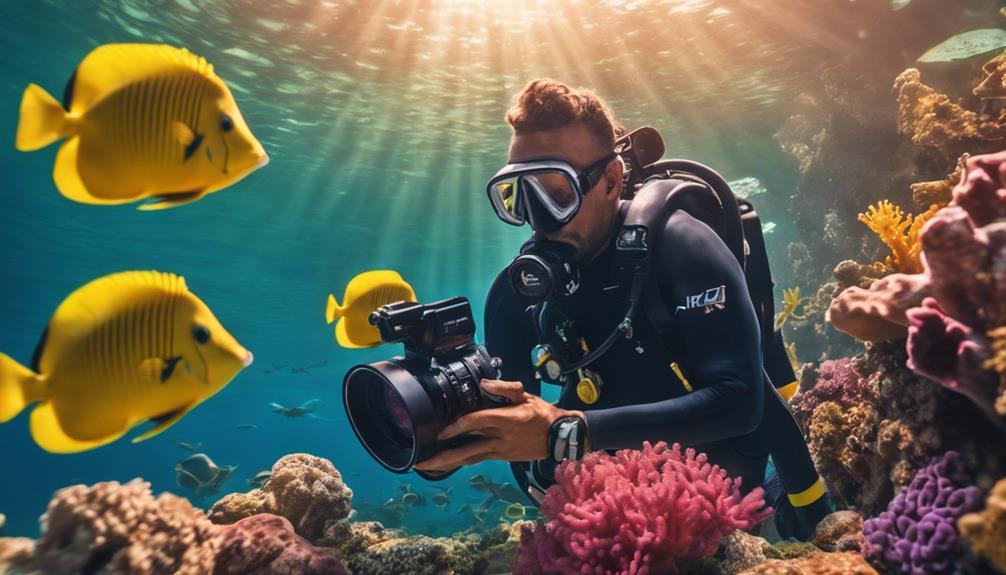
Exploring the enchanting world of aquatic life photography, enthusiasts are armed with specialized equipment, delving deep to capture the awe-inspiring beauty of underwater fauna in their natural settings. This activity isn’t merely about taking photos; it’s an engaging adventure that introduces you to the myriad wonders lurking beneath the ocean’s surface. As a perfect hobby for those drawn to both technology and nature, it offers a unique opportunity to connect with the marine environment on a profound level.
Here’s what enthusiasts should know as they embark on this fascinating journey:
- Specialized Equipment: The first step is acquiring the right gear. Underwater cameras and lenses are crucial for achieving those crisp, vivid images. These devices are engineered to endure the underwater pressure while precisely capturing the essence of aquatic life.
- Popular Among Divers: Often pursued by scuba divers and marine aficionados, aquatic life photography is a thrilling way to document and share the marvels of the underwater world with others.
- Unique Visuals: The photographs produced are incomparable—showcasing colorful fish, intricate corals, and various marine organisms in their natural splendor.
- Insightful Visuals: More than just capturing beauty, these photographs offer a glimpse into the marine ecosystem, emphasizing the significance of marine conservation and the urgent need to safeguard our oceans.
Diving into the aquatic life photography scene introduces you to a hidden realm, where adventure, conservation, and creativity merge seamlessly. Aside from this captivating activity, here are additional hobbies within this category that share a similar allure and connection to the aquatic world:
- Snorkeling: Explore shallow reefs and witness the vibrant marine life up close, no heavy equipment required.
- Scuba Diving: Take your underwater exploration deeper as you discover hidden underwater caves and wrecks.
- Aquascaping: Create and maintain beautiful underwater landscapes in an aquarium, a peaceful and artistic hobby.
- Freediving: Test the limits of your breath-holding abilities while experiencing the freedom of movement under the sea.
- Spearfishing: Combine fishing with snorkeling or diving for a more hands-on approach to catching your meal.
- Marine Conservation Volunteering: Get involved in projects that protect and restore marine environments.
- Kayaking: Paddle through coastal waters or rivers to enjoy the scenery and possibly encounter aquatic wildlife.
- Stand-Up Paddleboarding (SUP): A relaxing way to travel over water while standing up, offering a unique perspective of the aquatic environment.
- Surfing: Catch waves and experience the thrill of riding them back to shore.
- Kiteboarding: Harness the power of the wind to glide across the water on a board.
- Underwater Videography: Capture the dynamic movements and interactions within marine ecosystems on video.
- Marine Biology Studies: Dive deeper into understanding marine life and ecosystems through educational courses or hobbies.
Aquatic life photography, alongside these engaging activities, falls into the list of exciting hobbies that not only provide a thrilling experience but also foster a deeper appreciation and understanding of our planet’s aquatic environments.
Urban Animal Sketching

Diving into the world of urban animal sketching transitions your focus from the enchanting depths of aquatic life to the bustling streets and quiet parks of city landscapes. This intriguing hobby not only involves the act of drawing but also immerses you in the rich tapestry of wildlife that exists amidst the concrete and steel of our urban environments. It’s a perfect hobby for those looking to connect more deeply with their surroundings, offering a fresh lens through which to view the often unnoticed creatures that roam our cities.
Urban animal sketching is more than an artistic endeavor; it’s a journey of discovery and connection. As you sketch, you become attuned to the rhythms of urban wildlife, from the squirrels scampering in the park to the pigeons strutting on city monuments, and even the variety of pets that accompany their owners on daily errands. This activity not only hones your artistic skills but also deepens your appreciation for the resilience and beauty of animals in urban settings, highlighting the intricate balance between nature and city life.
Here’s a quick guide to get you started, followed by a list of related hobbies that might pique your interest:
| Location | Subjects to Sketch |
|---|---|
| Parks | Squirrels, Birds |
| Streets | City Pets, Pigeons |
| Urban Water Bodies | Ducks, Geese |
| Public Squares | Various Bird Species |
| Your Own Backyard | Visiting Wildlife |
Beyond urban animal sketching, here are some related hobbies that might capture your imagination:
- Bird Watching: An enjoyable hobby that complements urban animal sketching, offering opportunities to observe and learn about different bird species in their natural habitats.
- Nature Photography: Capturing the fleeting moments of urban wildlife through the lens, this hobby allows you to preserve the beauty of nature in the city.
- Urban Gardening: Cultivate green spaces in your own backyard or community, attracting a variety of wildlife and creating your own little sanctuary in the urban jungle.
- Wildlife Blogging: Share your urban animal sketches and observations online, connecting with a community of like-minded individuals passionate about urban ecology.
- Eco-volunteering: Participate in local conservation efforts, helping to protect and preserve urban wildlife habitats.
- Nature Hiking: Exploring city parks and greenways can offer surprising encounters with wildlife, providing inspiration for your sketches.
- Pet Portraiture: A nice twist to urban animal sketching, focusing on capturing the unique personalities of city pets in your artwork.
- Street Art: Incorporate your love for urban animals into public murals and art installations, bringing attention to the wildlife that shares our city spaces.
- Digital Art: Use technology to create digital illustrations of urban animals, experimenting with different styles and techniques.
- Botanical Illustration: While focusing on plants, this hobby can also intersect with urban animal sketching, as you document the flora that urban wildlife depends on.
- Wildlife Rehabilitation Volunteering: Gain hands-on experience with urban animals in need, providing a deeper understanding and connection that can inspire your art.
- Eco-friendly Crafting: Create art using sustainable materials, inspired by urban wildlife and their habitats.
These hobbies not only enrich your life with new skills and interests but also foster a deeper connection with the urban environment and its non-human residents. Whether you’re sketching in a bustling city park or volunteering to protect local wildlife, each activity offers a unique opportunity to engage with the natural world in meaningful ways.
Butterfly Gardening
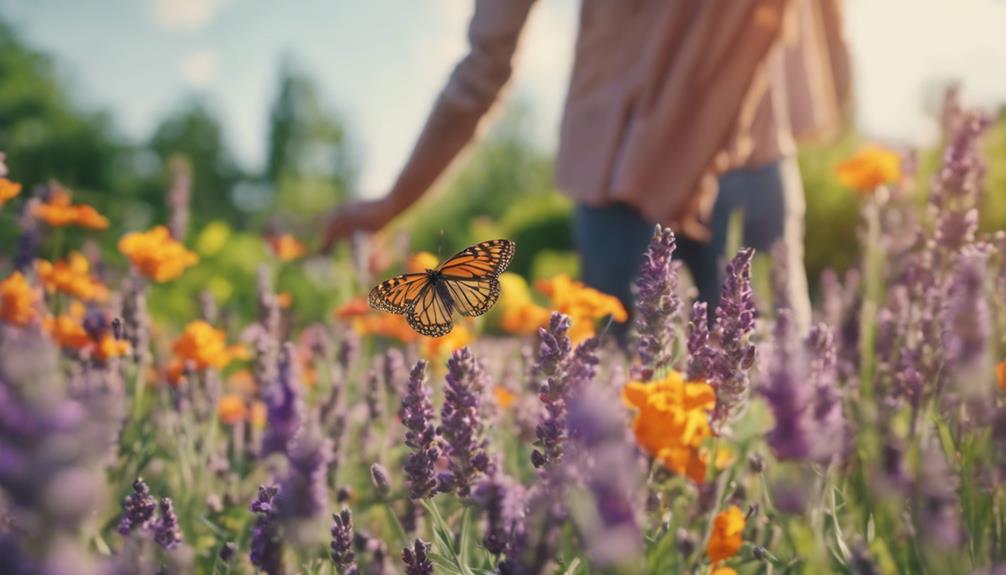
Embarking on the journey of butterfly gardening, you’ll transform your outdoor space into a haven for these fluttering pollinators, leveraging specific plants like milkweed and coneflower to attract and support their populations. This hobby not only beautifies your garden but significantly contributes to the local ecosystem by supporting butterfly populations crucial for pollination.
Here’s how you can dive into this fascinating hobby, aligning with your interests in wildlife and conservation:
- Select Nectar-Rich Plants: Incorporate butterfly-friendly plants such as milkweed, coneflower, and butterfly bush. These nectar-rich flowers are irresistible to butterflies and will turn your garden into a bustling hub of activity.
- Create a Habitat: Beyond just flowers, consider adding elements that cater to the entire butterfly lifecycle, like host plants for caterpillars.
- Observe and Learn: Witness the magical transformation from egg to caterpillar to chrysalis to adult, offering a captivating insight into the wonders of nature.
- Contribute to Conservation: Your butterfly garden plays a vital role in the conservation of these pollinators, supporting biodiversity in your local area.
In addition to butterfly gardening, here are some other engaging and enjoyable hobbies within the same category that might pique your interest:
- Bird Watching: Experience the thrill of spotting and identifying various bird species in their natural habitat.
- Beekeeping: Dive into the world of bees and learn how to manage a hive, producing your own honey while aiding in pollination.
- Botanical Drawing: Combine art with nature by learning to draw plants and flowers with precision and care.
- Herbal Gardening: Grow a variety of herbs for culinary, medicinal, or aromatic purposes.
- Nature Photography: Capture the beauty of flora, fauna, and landscapes through the lens of your camera.
- Composting: Turn kitchen and garden waste into rich soil, contributing to a more sustainable lifestyle.
- Nature Hiking: Explore trails and natural landscapes, immersing yourself in the beauty and tranquility of the outdoors.
- Rock Gardening: Create a unique garden by incorporating rocks and alpine plants for a rugged, natural look.
- Wildlife Rehabilitation: Volunteer to care for injured or orphaned wildlife until they can be released back into their natural habitat.
- Aquascaping: Design underwater landscapes in aquariums, balancing plants, and fish for a harmonious ecosystem.
- Urban Foraging: Learn to safely identify and gather wild food resources within your city or town.
This list of activities showcases the vast range of opportunities for those interested in engaging with and conserving the natural world. Whether you’re a novice or an experienced nature enthusiast, these hobbies offer a perfect hobby path to explore the wonders of our planet, contributing positively to our ecosystems.
Trail Animal Tracking
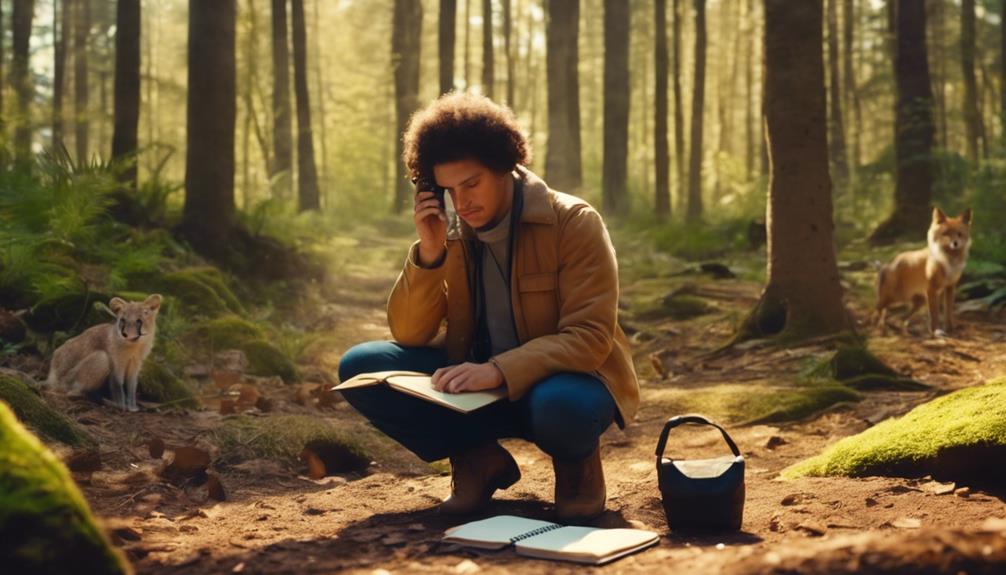
Embarking on the adventure of trail animal tracking opens a window to the wilderness’s untold narratives, transforming it into an engrossing and educational activity. This fascinating interest is much more than tracing the footprints left behind; it’s an immersive exploration into the complex symphony of life that thrives in the natural world. Here’s a deeper look into what makes it such a captivating activity, along with a list of related hobbies that share its spirit of outdoor exploration and wildlife appreciation.
- Identifying Signs: Delve into the wilderness from the perspective of its residents by spotting and deciphering footprints, droppings, scratch marks, and more. Each clue unravels the mysteries of wildlife habits and territories, making every discovery a rewarding experience.
- Knowledge Application: Harnessing knowledge of animal behavior and their environments is key. This goes beyond mere tracking to predicting animal movements and understanding the intricate web of ecosystem interactions.
- Technological Assistance: Leveraging gadgets like field guides, camera traps, and GPS enhances the tracking experience. These tools not only make the process more interactive but also aid in gathering important data for wildlife research.
- Deepening Connections: At its core, trail animal tracking is about forging a deep bond with nature. It offers a unique lens through which to view the natural world, creating a sense of unity and respect for its wonders.
Trail animal tracking isn’t just an activity; it’s a gateway to a world of exploration. Here are some related hobbies that offer similarly enriching experiences in the great outdoors:
- Bird Watching: The perfect hobby for those captivated by the avian world, combining patience, stealth, and the joy of observing the diverse species of birds in their natural habitats.
- Botanical Exploration: Dive into the plant kingdom by learning to identify various plant species, understanding their ecological roles, and appreciating their beauty.
- Geocaching: An exciting treasure hunt that uses GPS to locate hidden items, blending technology with the thrill of exploration.
- Nature Photography: Capture the fleeting moments of wilderness, from the macro beauty of a dewdrop on a leaf to the grand landscapes, offering both a creative outlet and a way to document the natural world.
- Star Gazing: Turn your gaze upwards and explore the cosmos. This hobby invites contemplation of the universe’s vastness and beauty, making it both humbling and inspiring.
- Survival Skills Training: Learn the techniques to thrive in the wild, from building shelters to finding water, offering a practical and empowering experience.
- Rock Hounding: The search for minerals and gems that involves hiking and digging, appealing to those with a love for geology and outdoor adventures.
- Foraging: Discover the edible and medicinal plants in your local wilderness, blending culinary arts with botanical knowledge.
- Wildlife Videography: Create captivating narratives through the lens, capturing the drama and beauty of wildlife in motion.
- Orienteering: A competitive or leisurely outdoor activity that challenges participants to navigate terrain using a map and compass, testing both physical and mental skills.
- Kayaking and Canoeing in Nature Reserves: Paddle through serene waters, getting up close with aquatic and shoreline wildlife in protected areas.
- Fishing: Whether for sport or relaxation, fishing connects you with the watery realms and the creatures that inhabit them.
Each of these hobbies offers a unique avenue to engage with the natural world, fostering a sense of wonder, respect, and conservation. Whether you’re tracking animals, gazing at the stars, or paddling through tranquil waters, there’s an endless array of exciting hobbies that invite you to step outside and explore.
Eco-Friendly Pet Toys
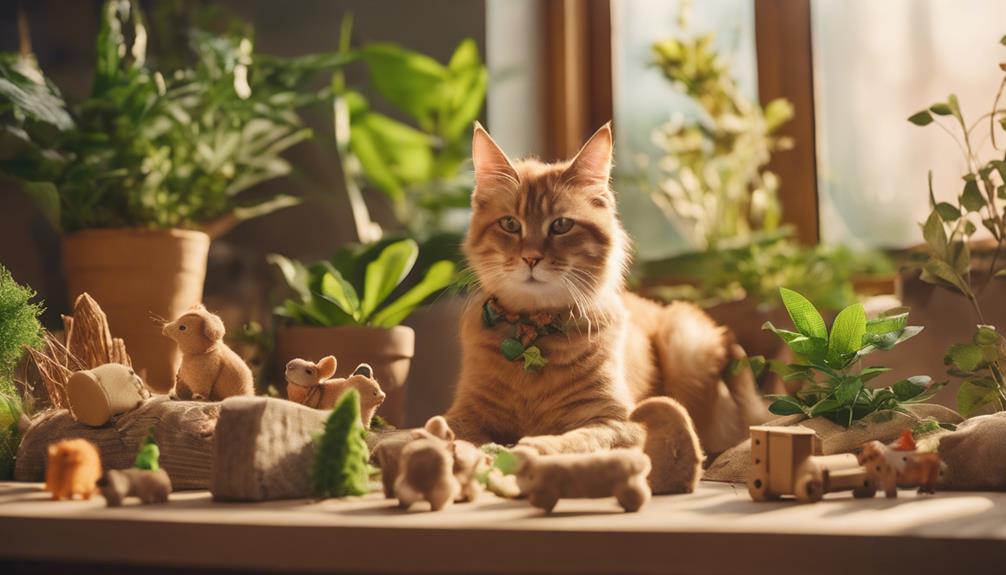
Exploring the great outdoors allows us to bond with nature, but incorporating eco-friendly practices into our homes, especially through the selection of pet toys, is a significant step towards reducing our environmental impact. Choosing toys made from sustainable materials not only benefits the planet but also makes pet care an enjoyable hobby that aligns with eco-conscious values.
Here are ways to make a difference, along with a list of eco-friendly pet toy hobbies to get involved in:
- Sustainable Material Seeker: Focus on finding toys made from hemp, recycled plastics, and organic cotton. These materials aren’t just durable; they’re also much kinder to the environment. This hobby involves researching and sourcing the best eco-friendly materials for pet toys, ensuring that your pet’s playtime doesn’t come at the planet’s expense.
- DIY Eco-Toys Crafter: Get creative by making your own pet toys from upcycled materials. This can range from simple projects like braiding old t-shirts into chew toys to more complex endeavors like sewing organic cotton fetch toys. It’s a fun hobby that promotes sustainability and reduces waste.
- Non-Toxic Toy Advocate: Commit to purchasing and promoting pet toys that use non-toxic dyes and natural materials. This hobby involves educating others about the importance of safe, eco-friendly toys for pets, ensuring they’re chewing on items that won’t harm their health or the environment.
- Biodegradable Toy Collector: Focus on toys designed to be biodegradable, reducing waste and promoting a sustainable lifestyle. This hobby involves a commitment to sourcing and using toys that will naturally decompose, thereby lessening your environmental footprint.
- Interactive Toy Designer: Create or seek out toys with interactive designs that provide essential mental and physical stimulation for pets. This could involve designing puzzles that dispense treats or toys that encourage pets to think and move, making playtime both engaging and beneficial.
- Eco-Friendly Toy Reviewer: Start a blog or YouTube channel reviewing eco-friendly pet toys. Share your finds, test durability, and assess how much pets enjoy them. This hobby helps spread awareness of sustainable pet products and can guide others in making eco-conscious choices.
- Recycled Material Collector: Dedicate time to collecting recyclable materials that can be transformed into pet toys. This could involve organizing community clean-up events to gather materials, promoting both environmental cleanup and the creation of eco-friendly toys.
- Natural Material Forager: For those with access to safe, natural materials, this hobby involves foraging for items like sticks or pine cones that can serve as pet toys. It encourages an appreciation for the simple, often overlooked materials nature provides.
- Eco-Friendly Pet Toy Seller: Turn your passion for sustainable pet toys into a small business. Handcraft toys from eco-friendly materials and sell them online or at local markets. This not only makes for a fulfilling hobby but also supports the larger movement towards sustainability.
- Sustainable Pet Community Organizer: Create a community or join existing ones focused on sustainable pet care. Organize events, swap meets for eco-friendly toys, and share information on the best practices for reducing pets’ environmental impacts.
- Eco-Friendly Toy Innovation Challenge Participant: Engage in challenges or competitions aimed at creating the most sustainable, safe, and fun pet toys. This encourages innovation and could lead to new discoveries in eco-friendly pet care.
- Green Toy Swapper: Initiate or participate in toy swap events where pet owners can exchange eco-friendly toys. This is a great way to ensure toys get a second life, reducing waste and promoting a sense of community among eco-conscious pet owners.
Incorporating eco-friendly practices into pet care through these hobbies not only benefits the environment but also enhances the bond between pets and their owners. It turns out that caring for our furry friends in a sustainable manner isn’t just a good hobby but a crucial step towards a greener planet.
Wildlife Sound Recording

Exploring the realm of wildlife sound recording unveils a fascinating journey beyond merely hitting the record button. It is an amalgamation of patience, precision, and a profound respect for the complex sonic environments of nature. This activity is not merely engaging; it serves as a portal to the hidden lives of wildlife. Armed with specialized gear like superior microphones and audio recorders, enthusiasts can capture the authentic essence of animal calls and vocalizations with clarity.
Embarking on this adventure requires a specific set of equipment and qualities:
| Equipment Needed | Purpose |
|---|---|
| High-quality microphones | Capture clear, precise sounds |
| Audio recorders | Store and manage recordings |
| Headphones | Monitor sounds in real-time |
| Camouflage gear | Remain unseen by wildlife |
| Patience and observation | Essential for successful recording |
With this arsenal, you delve into a venture that not only deepens your insight into wildlife behavior but also aids scientific research and conservation initiatives. Wildlife sound recording transcends a mere pastime; it is a profound exploration of nature’s harmony, offering invaluable insights and contributions to the globe beyond mere recordings.
Here’s a list of related activities that share the same spirit of exploration and connection with nature, making them some of the most interesting hobbies for nature enthusiasts:
- Birdwatching: Observing birds in their natural habitats offers a peaceful yet exhilarating experience.
- Nature photography: Capturing the beauty of wildlife and landscapes through the lens.
- Hiking: Exploring trails and immersing oneself in the tranquility of nature.
- Butterfly watching: Identifying and appreciating the delicate beauty of various butterfly species.
- Astronomy: Gazing at the stars and planets, connecting with the vast universe.
- Botanical studies: Studying plant life and understanding the flora of different regions.
- Nature journaling: Documenting observations and reflections on nature in a personal journal.
- Rock collecting: Discovering and collecting unique geological specimens.
- Kayaking: Navigating through waterways, getting up close with aquatic life.
- Scuba diving: Exploring underwater ecosystems and marveling at marine biodiversity.
- Foraging: Gathering wild food, learning about edible plants and mushrooms.
- Environmental volunteering: Participating in conservation projects and wildlife protection efforts.
- Camping: Spending nights outdoors, experiencing the wilderness firsthand.
Each of these activities, much like wildlife sound recording, offers a unique way to engage with and appreciate the natural world. They represent not just hobbies but doorways to adventures and learning, making them perfect hobbies for those who seek to understand and preserve the beauty of our planet.
Pet Food Crafting

Diving into the world of pet food crafting allows you to take charge of your furry companion’s diet, offering them nutritious, custom-made meals that cater specifically to their needs. This practice isn’t just about blending ingredients; it’s an engaging, creative activity that strengthens your bond and provides a deeper insight into their health and well-being.
Here are four reasons why engaging in pet food crafting is both rewarding and beneficial:
- Quality Control: You have the power to select the ingredients, ensuring they’re fresh and of the highest quality. This eliminates the uncertainty surrounding the contents of your pet’s food.
- Cost-Effective: Initially, it may seem like an investment, but creating your pet’s meals can be more economical over time. You’re investing in their health, which can lead to fewer vet bills in the future.
- Customizable Nutrition: You can tailor meals specifically to your pet’s dietary needs and preferences, making sure they receive the exact nutrients required for their optimal health.
- Strengthened Bond: The act of preparing your pet’s meals adds an extra layer of care and interaction that significantly strengthens your relationship with them.
Pet food crafting isn’t merely a hobby; it’s an engaging and rewarding way to ensure the health and happiness of your pet. By becoming their personal chef and nutritionist, you embody the role of their best friend in an entirely new and fulfilling way.
Expanding within this hobby category, here are some interesting activities that pet owners can explore to further enhance their pets’ lives and their own skills:
- Homemade Dog Treat Baking: Crafting special treats for your dog can be a fun and rewarding experience, allowing you to experiment with healthy ingredients.
- DIY Cat Treat Recipes: Similar to dog treats, creating homemade treats for cats can cater to their specific tastes and dietary needs.
- Nutritional Research: Diving into books and online resources to learn about pet nutrition can be an enlightening hobby, ensuring you’re well-informed about what’s best for your pet.
- Organic Pet Food Preparation: Focusing on organic ingredients to prepare meals can ensure your pet is eating the healthiest food possible.
- Raw Diet Formulation: For those interested in a more natural diet for their pets, learning to properly balance a raw diet can be a challenging hobby.
- Pet Food Sensitivity Testing: Experimenting with different ingredients to identify allergies or sensitivities in your pet can be crucial for their well-being.
- Gourmet Pet Meal Cooking: Elevating your pet’s meals to gourmet levels can be a fun hobby for those who enjoy cooking and want to spoil their pets.
- Vegetarian Meal Options for Pets: Exploring vegetarian or vegan diets for pets with such dietary needs can be an interesting challenge for pet owners.
- Supplement DIY: Learning to create your own supplements, such as fish oil treats for skin and coat health, can be a rewarding process.
- Herbal Remedies for Pets: Studying and applying herbal remedies for minor pet health issues can be a fascinating interest.
- Interactive Feeding Toys DIY: Creating toys that also serve as feeding solutions can add an entertaining twist to your pet’s mealtime.
- Pet Cooking Classes: Participating in or leading cooking classes for pet meals can be an exciting hobby, allowing you to share your knowledge with others.
Engaging in these activities not only provides an opportunity to deepen your understanding of pet health and nutrition but also represents an enjoyable hobby that can enhance the lives of both pets and their owners. Whether it’s baking special treats or formulating a balanced diet, the world of pet food crafting offers a wide range of interesting, fun hobbies for those looking to invest in their pet’s well-being.
Nature Journaling

Exploring the great outdoors and capturing its essence has always been a captivating activity for many. Nature journaling stands out as a perfect hobby for those looking to immerse themselves in the beauty and diversity of the natural world. It involves detailed observations, artistic sketches, and reflective writing about your surroundings, all compiled within a dedicated notebook.
But the realm of nature-centric hobbies extends beyond just journaling. Here’s a list of 9 to 13 additional hobbies within this category that are sure to pique your interest:
- Bird Watching: Equip yourself with a pair of binoculars and a field guide to start identifying and appreciating the wide variety of bird species around you.
- Hiking: Whether it’s a gentle trail or a challenging mountain path, hiking gets you up close with nature’s wonders at your own pace.
- Gardening: Cultivating plants, whether for beauty or for food, connects you deeply with the cycle of life and the earth.
- Nature Photography: Capture the fleeting moments and stunning landscapes of the natural world through the lens of your camera.
- Rock Collecting: Discover the diverse minerals and geological formations that tell the earth’s story, one stone at a time.
- Stargazing: With just a telescope or even the naked eye, explore the vastness of the universe and learn about the constellations.
- Foraging: Learn to safely identify and harvest wild edibles, offering a direct connection to your environment and a sustainable way to enjoy nature’s bounty.
- Butterfly Watching: Delight in the vibrant colors and gentle flight of butterflies, documenting or simply enjoying their variety and life cycles.
- Kayaking/Canoeing: Paddle through lakes, rivers, or oceans to explore aquatic ecosystems and enjoy the tranquility of water environments.
- Mountain Biking: For an adrenaline rush, navigate through trails and terrains, offering both a physical challenge and a unique way to appreciate landscapes.
- Camping: Spend a night under the stars and immerse yourself fully in the wilderness, learning survival skills and enjoying the simplicity of outdoor living.
- Snorkeling: Get a glimpse of the underwater world, observing marine life and coral reefs in their natural habitats.
- Nature Crafts: Use natural materials to create art, from leaf pressing to creating wreaths, blending creativity with natural beauty.
Each of these activities offers a unique way to connect with nature, fostering mindfulness, creativity, and an appreciation for our environment. Whether you’re sketching a landscape in your nature journal, identifying a new bird species, or gazing at the stars, these hobbies provide enriching experiences that highlight the beauty and intricacy of the natural world.
Engaging in these hobbies not only enhances your personal well-being but also deepens your understanding of the importance of preserving our planet.
Pet Portrait Painting

Immortalizing your beloved pet through art isn’t just a heartwarming endeavor but also a perfect hobby for animal lovers and art enthusiasts alike. Pet portrait painting captures the essence and personality of your furry friend in a way that photographs simply cannot. This creative activity isn’t just about the final artwork; it’s a journey of connecting on a deeper level with your pet and celebrating their role in your life. Whether you’re an experienced artist or just starting out, this rewarding hobby offers various avenues to explore your creativity.
Here are thirteen hobbies within the realm of pet portrait painting to consider, each offering a unique way to commemorate your pet:
- Acrylic Pet Portraits: Acrylic paint dries quickly and is versatile, making it a popular choice for capturing vibrant pet personalities.
- Oil Pet Portraits: For those seeking a classic look, oil paints offer a rich texture and depth of color that can bring your pet’s image to life with stunning realism.
- Watercolor Pet Portraits: Watercolor painting is perfect for creating soft, ethereal portraits that capture the gentle nature of your pet.
- Pastel Pet Portraits: Pastels allow for a blend of colors and a soft finish, ideal for fluffy pets or those with unique color patterns.
- Digital Pet Portraits: A modern approach, digital painting offers endless possibilities in terms of styles and backgrounds, making it a cool hobby for tech-savvy artists.
- Sketching: For those who prefer a minimalist approach, pencil or charcoal sketches can beautifully capture the essence of your pet in monochrome.
- Pet Caricatures: Adding a fun twist, caricatures exaggerate your pet’s most distinctive features, resulting in a humorous and affectionate tribute.
- Pet Portrait Sculpting: Moving beyond two dimensions, sculpting your pet in clay or another medium offers a tactile and immersive experience.
- Pet Portrait Embroidery: This hobby combines the love for pets with the art of needlework, resulting in stunning, textured pieces that are both decorative and personal.
- Pet Portrait Collage: For a more abstract or mixed-media approach, creating a collage from various materials can encapsulate your pet’s personality in a unique and interesting way.
- Pet Portrait Mosaic: Assembling small pieces of glass, stone, or tiles to form a mosaic is a challenging hobby that can produce dazzling portraits full of color and life.
- Pet Portrait Quilting: Quilting pet portraits is a cozy way to keep your pet close, blending traditional quilting skills with the art of portraiture.
- Pet Portrait Engraving: Engraving on metal, wood, or glass offers a lasting and elegant tribute to your pet, combining craftsmanship with heartfelt sentiment.
Each of these hobbies provides a unique opportunity to honor your pet, develop your artistic skills, and create something truly special. Whether you’re looking for a cool hobby to express your creativity or a meaningful way to remember a beloved pet, exploring the world of pet portrait painting and its many facets is sure to bring joy and satisfaction.
Animal-Assisted Therapy Volunteering
Engaging in animal-assisted therapy volunteering isn’t just a rewarding endeavor; it’s a life-changing activity that bridges the gap between animals’ therapeutic benefits and individuals facing various emotional and physical challenges. This perfect hobby combines passion for animal care with the desire to contribute positively to the community, making it both fulfilling and impactful.
Here are some fascinating hobbies within the realm of animal-assisted therapy that might pique your interest:
- Dog-Assisted Reading Programs: Partnering with therapy dogs to help children improve their reading skills in a supportive environment.
- Equine Therapy for PTSD: Utilizing horses to help veterans and others heal from post-traumatic stress disorder through building trust and communication.
- Pet Visitations in Hospitals: Bringing cats and dogs to hospitals to provide comfort and reduce stress among patients.
- Animal-Assisted Activities in Nursing Homes: Introducing pets like rabbits and cats to elderly residents to enhance mood and encourage socialization.
- Therapeutic Bird Handling: Using birds to assist in therapy sessions, improving patient interaction and learning in educational settings.
- Canine-Assisted Physical Rehabilitation: Working with dogs to aid in physical therapy, helping individuals regain strength and mobility.
- Rabbit Therapy for Community Well-being: Bringing rabbits to community centers to elevate overall feelings of happiness and well-being.
- Aquarium Therapy: Setting up aquariums in various therapeutic settings to provide a calming environment, reducing anxiety.
- Therapy Dog Training Volunteer: Becoming a volunteer trainer for therapy dogs, preparing them for their roles in assisting individuals.
- Wildlife Rehabilitation Volunteering: Assisting in the rehabilitation of wild animals with the goal of reintroducing them to their natural habitats, while providing therapeutic engagement for individuals.
- Assisted Therapeutic Farming: Engaging individuals in farm activities alongside animals as a form of therapy, promoting emotional and physical healing.
- Mobile Pet Therapy Services: Offering mobile services that bring therapy animals to individuals and settings that mightn’t otherwise have access.
These activities highlight how volunteering in animal-assisted therapy serves as an interesting hobby that profoundly impacts both the volunteers and those they help. The connection formed between humans and animals in these settings not only accelerates recovery and improves well-being but also offers a deeply enriching experience for the volunteers themselves. If you have a love for animals and a desire to make a difference, delving into the world of animal-assisted therapy volunteering might just be the perfect hobby for you.
Wild Bird Feeding

Exploring the enriching activity of wild bird feeding is a great hobby that perfectly marries a love for animals with the allure of nature. This activity isn’t only a popular pastime but also an impactful way to engage with wildlife conservation from the comfort of your own backyard.
To enhance your experience in this captivating activity, here are some essential tips:
- Provide a Variety of Seeds: Catering to the different dietary needs of various bird species is crucial. Incorporating seeds like sunflower, nyjer, and millet will attract a wide range of birds.
- Use Bird Feeders Wisely: Choosing feeders with perches and trays helps accommodate birds of all sizes and feeding preferences, enriching both their experience and yours.
- Maintain Cleanliness: Keeping your bird feeders clean is essential to prevent the spread of diseases among your avian guests, ensuring they continue to visit.
- Observe and Learn: The act of watching birds provides valuable insights into their behaviors and social interactions, deepening your connection with the natural world.
In addition to wild bird feeding, here are related hobbies that might pique your interest:
- Birdwatching: Equipped with a pair of binoculars and a field guide, birdwatching can be an enjoyable hobby for those interested in observing birds in their natural habitats.
- Butterfly Gardening: Creating a garden that attracts butterflies is a rewarding activity that contributes to the conservation of these beautiful insects.
- Nature Photography: Capturing the beauty of wildlife and landscapes through photography is a perfect hobby for those who appreciate nature’s artistry.
- Hiking: Exploring trails and immersing yourself in nature is a great way to stay active and discover the diverse ecosystems around you.
- Gardening: Cultivating a garden not only beautifies your surroundings but also provides a sanctuary for local wildlife.
- Beekeeping: An interesting hobby that supports the environment by helping to sustain bee populations, crucial for pollination.
- Composting: Turning organic waste into nutrient-rich compost is a practical activity that benefits your garden and the planet.
- Nature Journaling: Documenting your observations and reflections on nature can be a peaceful and reflective hobby.
- Astronomy: Studying the stars and planets connects you with the broader universe, offering a humbling perspective on our place in it.
- Rock Collecting: Collecting and identifying various types of rocks and minerals can be an exciting hobby for those fascinated by the Earth’s natural history.
- Kayaking: Paddling through rivers or lakes offers a unique vantage point to view wildlife and enjoy the tranquility of water.
- Camping: Spending time camping in the great outdoors is a classic hobby that allows for a deeper appreciation of nature.
- Foraging: Learning to safely identify and harvest wild food is an interesting and rewarding way to connect with your local environment.
Engaging in these activities not only provides personal enjoyment but also fosters a deeper appreciation and understanding of the natural world. Whether you’re feeding birds in your backyard or hiking through a national park, each of these hobbies offers a unique way to engage with and contribute to wildlife conservation.
Urban Wildlife Exploration

Exploring urban wildlife is an exciting hobby that offers a window into the remarkable adaptability of animals in city environments. From birds and squirrels to raccoons and urban foxes, these creatures demonstrate incredible resilience and cleverness in navigating the human-dominated landscapes. This activity isn’t merely a way to pass the time; it’s an immersive experience into understanding how nature persists in urban settings.
To deepen your experience in urban wildlife exploration, consider the following hobbies within this category, each offering a unique perspective and opportunity to connect with nature in the city:
- Birdwatching in City Parks: Armed with a pair of binoculars, birdwatching can reveal the diverse avian life that thrives in urban green spaces.
- Photographing Urban Wildlife: Capturing images of animals in their city habitats combines art with observation, making it a rewarding pursuit.
- Urban Botany Walks: Exploring the plant life that supports urban animals adds another layer to your wildlife exploration, highlighting the interconnectedness of ecosystems.
- Nighttime Wildlife Walks: Many urban animals are nocturnal. Exploring the city at night can unveil a hidden world of wildlife activity.
- Insect Spotting: Delving into the world of urban insects can be fascinating, revealing the vast diversity of life in even the smallest city spaces.
- Creating Wildlife Gardens: Designing spaces in your own backyard or community to attract and support urban wildlife is both a creative and practical way to engage with nature.
- Volunteering for Wildlife Surveys: Participating in local wildlife counts or surveys is a hands-on way to contribute to conservation efforts and learn more about urban animal populations.
- Attending Wildlife Workshops: Many cities offer workshops or talks on local wildlife, which can be a great way to increase your knowledge and meet like-minded individuals.
- Exploring Urban Waterways: Rivers, canals, and ponds in cities are hotspots for wildlife. Kayaking or simply walking along these waterways can provide unique insights into aquatic urban life.
- Participating in Citizen Science Projects: Contributing to projects that gather data on urban wildlife can enhance scientific understanding and conservation efforts.
- Urban Foraging: Learning about edible plants and fungi in urban areas ties into a broader understanding of the ecosystem and can be a delightful way to connect with your surroundings.
- Wildlife Sound Recording: Documenting the sounds of urban nature, from bird calls to the rustling of mammals, is a unique way to engage with wildlife.
These hobbies not only enrich your understanding and appreciation of urban ecosystems but also emphasize the significance of conservation in city environments. Urban wildlife exploration is a perfect hobby for those interested in discovering the resilience of nature amidst the hustle and bustle of city life. It’s a reminder that adventure and discovery can be found in our everyday surroundings, making it one of the most interesting and rewarding activities to pursue.
Moth Identification
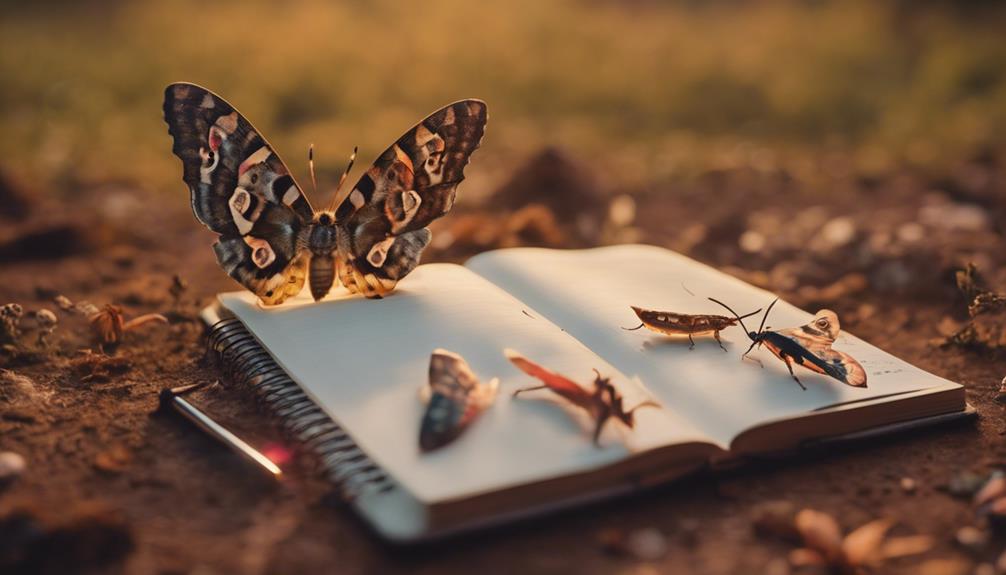
Diving into the realm of moth identification unlocks a captivating world where the beauty of biodiversity comes to life. This activity isn’t merely about recognizing various species; it’s an immersive experience connecting individuals with the intricacies of nature, emphasizing the significance of each creature in maintaining ecological balance. Moth identification stands as a perfect hobby for those interested in exploring the great outdoors while contributing to scientific knowledge and conservation efforts.
Here’s a closer look at moth identification and a list of similar hobbies that nature enthusiasts might find intriguing:
- Moth Identification: By studying the unique physical characteristics and behaviors of moths, enthusiasts can contribute to environmental conservation efforts. This hobby involves using field guides and online resources to recognize different species, understanding their roles in pollination, and documenting sightings to aid scientific research.
- Bird Watching: Observing and identifying birds in their natural habitat, birdwatching is a peaceful activity that fosters a deep appreciation for wildlife and conservation.
- Butterfly Gardening: Creating gardens that attract butterflies is a rewarding way to contribute to the survival of these beautiful insects while enjoying their presence in your own backyard.
- Nature Photography: Capturing the beauty of the natural world through photography isn’t only an artistic endeavor but also a means to document and share the importance of biodiversity.
- Hiking: Exploring trails and immersing oneself in the beauty of nature is a great way to stay active and learn more about local flora and fauna.
- Rock Hounding: The hunt for geological treasures in nature can be an exciting hobby for those interested in earth sciences and the beauty of natural formations.
- Stargazing: Looking up at the night sky and learning about constellations, planets, and celestial events connects hobbyists with the vastness of the universe.
- Herpetology (Reptile and Amphibian Study): Observing and studying these creatures in their natural habitats can be a fascinating activity for wildlife enthusiasts.
- Fossil Hunting: Discovering remnants of the past while understanding Earth’s historical biodiversity makes fossil hunting an intriguing hobby for history and science buffs.
- Nature Journaling: Documenting observations in nature through drawings and writings encourages a deeper connection with the environment and promotes mindfulness.
- Beekeeping: Contributing to the pollination process and producing honey, beekeeping is a rewarding way to support biodiversity and learn about the crucial role of bees.
- Wildlife Rehabilitation: Volunteering to help injured or orphaned wildlife can be an enriching experience for those passionate about animal welfare and conservation.
- Foraging: Learning to safely identify and harvest wild edible plants connects individuals with traditional knowledge and encourages a sustainable lifestyle.
Engaging in these activities not only brings joy and fulfillment but also plays a crucial role in promoting environmental stewardship and conservation. Whether it’s the quiet observation of moth identification or the adventurous pursuit of hiking and fossil hunting, each hobby offers a unique way to explore and appreciate the natural world. These endeavors highlight the importance of protecting our planet’s biodiversity, making them not just hobbies but meaningful contributions to Earth’s well-being.
Benefits of Pet and Wildlife hobbies
Exploring pet and wildlife hobbies not only connects you deeply with nature but also offers significant mental health benefits, including stress relief and a boost in well-being. These exciting hobbies aren’t just about spending time outdoors or having a furry friend to come home to; they’re a gateway to understanding the world around you on a much deeper level. Here’s how:
- Fostering Empathy: Caring for pets or observing wildlife nurtures a sense of empathy towards animals. You start to see the world from their perspective, understanding their needs and behaviors.
- Therapeutic Benefits: The calming effect of being around animals or immersed in nature can significantly reduce stress. It’s not just about feeling good in the moment; these activities can improve your overall mental health.
- Educational Opportunities: You’ll learn about different species, their habitats, and behaviors. This knowledge isn’t just fascinating—it’s empowering, enabling you to contribute meaningfully to conversations about conservation and the environment.
- Conservation Awareness: By engaging with the natural world, you become an advocate for its protection. Whether it’s through responsible pet ownership or participating in wildlife conservation efforts, your actions make a difference.
Diving into these exciting hobbies offers endless fun and a deeper appreciation for the natural world.
Tips and tricks for Pet and Wildlife hobbies
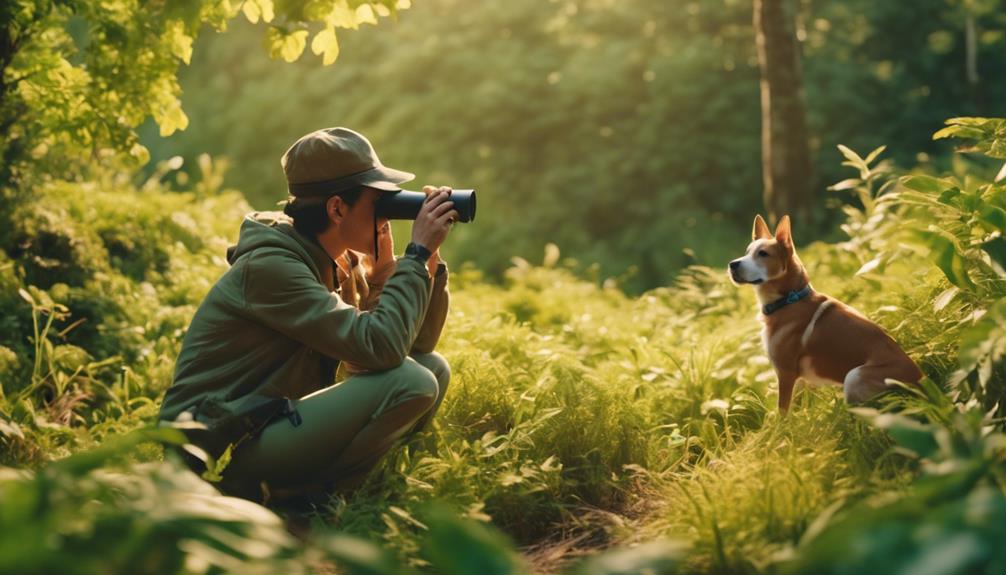
To enhance your pet and wildlife hobbies, it’s essential to equip yourself with the right tools and knowledge. This can range from high-quality camera gear for capturing stunning wildlife photos to joining local communities that share your passion. Here are a few tips and tricks to get the most out of your pet and wildlife hobbies:
- Invest in Quality Camera Gear: For wildlife photography, a DSLR camera paired with a telephoto lens can make all the difference in capturing those breathtaking moments in nature. The right gear allows you to photograph wildlife from a safe distance, ensuring both your safety and the animals’.
- Join Birdwatching Groups: Engaging with local birdwatching communities or online forums can exponentially enrich your experience. You’ll share sightings, tips, and possibly make new friends who share your enthusiasm for birdwatching.
- Utilize Identification Tools: Field guides and bird identification apps are invaluable for birdwatchers. They help you quickly identify species, learn about their habits, and track your sightings.
- Volunteer for Wildlife Conservation: Offering your time at wildlife rehabilitation centers not only supports conservation efforts but also provides a hands-on way to learn about animal care. This experience can be deeply rewarding and educational.
Be smart: Multitask and take Pet and Wildlife hobbies to next level
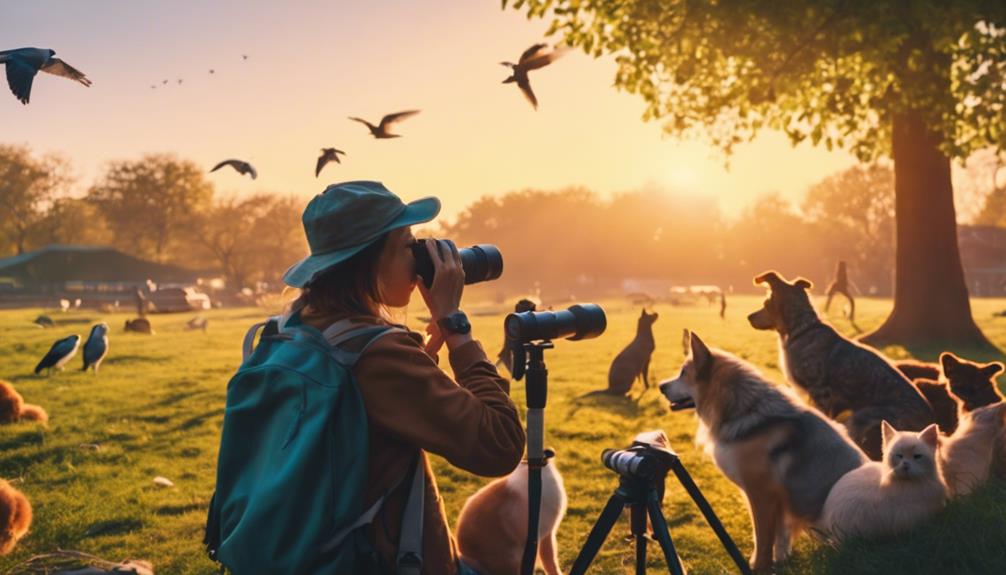
- Leverage Audiobooks for Enhanced Learning: While engaging in your pet and wildlife hobbies, consider integrating audiobooks from platforms like Audible.com or Blinkist.com. This allows you to absorb valuable knowledge and insights on animal behavior, care, and the natural world around us without having to pause your activities. Whether you’re on a hike observing wildlife or spending quality time with your pets at home, audiobooks can provide a continuous learning experience that enriches your understanding and appreciation of animals.
- Advance with Affordable Online Courses: Elevate your pet and wildlife hobby to new heights by enrolling in online courses. Platforms like Coursera.org or Udemy offer a wide range of affordable courses that cater to various interests within animal care and wildlife observation. These courses not only provide structured learning opportunities but also enable you to connect with experts and fellow hobbyists from around the world. By dedicating time to these courses, you can gain deeper insights, enhance your skills, and become more proficient in your hobbies.
Discover AI Hobby Matchmaker

Are you enthusiastic about pets and wildlife? Imagine immersing yourself in the world of hobbies with a touch of AI support:
- Hobby Generator: Explore the captivating realm of hobbies centered around pets and wildlife using this innovative tool. By answering a few simple questions, you’ll receive personalized hobby suggestions tailored to your love for animals. Discover exciting hobbies related to pets and wildlife here: Discover Your Perfect Pet & Wildlife Hobby.
- Hobby Coach: Enhance your hobby exploration with this unique tool designed to assist you in mastering activities focused on pets and wildlife. Receive a customized checklist to efficiently navigate your hobby journey within your specified timeframe and budget. Get expert advice on all pet and wildlife hobby-related questions. Start your personalized hobby adventure here: Your Personal AI Pet & Wildlife Hobby Coach.
These AI-powered solutions are crafted to cater to your interests in pets and wildlife, ensuring that each hobby recommendation is engaging, fulfilling, and aligned with your passion for animals.
Final thoughts

Exploring hobbies from pet photography to volunteering at animal shelters offers an enriching journey into the world of pets and wildlife, uniquely tailored to match your interests and lifestyle. Whether you’re capturing your pet’s quirky moments, quietly observing birds, bonding with horses, assisting in animal adoption, or creating a haven for pollinators, each activity opens a door to deeper connections with nature and our furry, feathered, or buzzing friends.
Pet photography isn’t just a cool hobby; it’s a way to freeze time, preserving the endearing personalities and moments of our pets. Birdwatching pulls you into the heart of nature’s rhythms, teaching patience and attentiveness. Horseback riding lessons offer a mix of adventure and tranquility, fostering an incredible bond between rider and horse. Volunteering at animal shelters provides a sense of purpose, contributing to a greater cause. Gardening for pollinators, on the other hand, directly impacts the environment, supporting vital ecosystems.
As you dive into these hobbies, remember, it’s not just about the time spent but the memories created and the lives impacted, including your own. Each hobby is a stepping stone to a more fulfilled, engaged, and environmentally conscious life. So, what’re you waiting for? Find your cool hobby today and start making a difference.
Frequently Asked Questions
What are some popular hobbies that involve interacting with pets and wildlife?
Popular hobbies involving interacting with pets and wildlife include birdwatching, pet training, animal photography, fish keeping, and wildlife gardening. Explore our list above to discover more pets and wildlife-related hobbies. Check our hobby generator to find more personalized results.
How can I find the right hobby related to pets and wildlife that suits my interests?
You can find the right hobby related to pets and wildlife by exploring different activities such as volunteering at animal shelters, wildlife rehabilitation centers, joining local birdwatching groups, or taking up activities like hiking or nature photography. Try each and see what suits you best. Ask our hobby generator to discover personalized hobby results just for you.
Are there any hobbies centered around wildlife conservation that I can participate in?
Yes, hobbies centered around wildlife conservation include volunteering for wildlife monitoring programs, participating in beach cleanups, joining conservation organizations, or supporting wildlife sanctuaries through donations or fundraising events. Search for local groups in your area, contact specialized organizations, universities or start your own group!
What safety measures should I consider when engaging in hobbies with pets or wildlife?
When engaging in hobbies with pets or wildlife, consider factors like proper handling techniques, understanding animal behaviors, using appropriate safety gear, keeping vaccinations up to date for pets, and respecting wildlife habitats to ensure safety for both animals and yourself.
How can I incorporate my love for animals into a hobby without owning a pet?
You can incorporate your love for animals into a hobby without owning a pet by volunteering at animal shelters, wildlife rehabilitation centers, participating in community wildlife conservation projects, attending educational workshops or seminars related to animals, or simply spending time observing and appreciating wildlife in their natural habitats.




